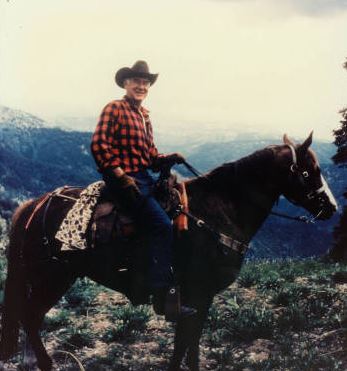
The Idaho Wilderness collection commemorates the 50th anniversary of the signing of the U.S. Wilderness Act with primary source material documenting the political issues surrounding the management of public lands in Idaho. The Wilderness Act of 1964 created a system for the United States government to designate specific wild areas of America as wilderness areas. The Wilderness Act was signed into law by President Lyndon B. Johnson on September 3, 1964. “A wilderness, in contrast with those areas where man and his own works dominate the landscape, is hereby recognized as an area where the earth and community of life are untrammeled by man, where man himself is a visitor who does not remain.”
A history of wilderness management
This collection of documents represents a cross-section of historical resources available at the Boise State University Albertsons Library Special Collections and Archives. Reports, correspondence, memos, photographs, and maps relating to Idaho leaders managing Idaho’s wilderness areas. Focusing primarily on the years after the 1964 signing, this collection features typical manuscript material found in several highly used collections in the Albertsons Library Special Collections and Archives.
In their own words
The Idaho Wilderness collection features documents from more than six Idaho politicians and writers. Here are quotes about the significance of wilderness from the men and women featured in this exhibit:
| Idaho Senator Frank Church"Soon the 'River of No Return Wilderness' will preserve the high and remote heartland of Idaho, protecting our watershed, wildlife habitat, and what's left of God's country in this State." Browse Church's collection on wilderness |
| Idaho Senator Len B. Jordan "Idaho's problem appears to be how to achieve a balance between the need to preserve an adequate amount of our tremendous land resources in a natural state while being able to develop the resources of the remaining lands to assure jobs and future economic stability for you and other young people who grow to maturity in Idaho. I think we can achieve that goal and live quality lives at the same time, if our cultural standards can match the grandeur of our land and water resources." Browse Jordan's collection on wilderness |
| Idaho Governor Cecil D. Andrus "Nowhere in the Continental United States is there a more ideal blend of habitats for wildlife than Chamberlin and the surrounding canyons. This rolling, unroaded basin is sprinkled with streams, meadows, timbered slopes and spruce bogs providing a high-quality summer habitat for 190 species of wildlife." Browse Andrus' collection on wilderness |
| Idaho Representative Larry LaRocco "Idaho contains the largest area of designated wilderness in the lower 48, most of which is in my district. One of the designated areas is the 2.4 million acre Frank Church River of No Return Wilderness -- the largest wilderness administered by the Forest Service. My constituents work there -- as outfitters, guides, ranchers and researchers -- and play there as hunters, backpackers, anglers and cross-country skiers." Browse LaRocco's collection on wilderness |
| Idaho Representative Gracie Pfost "We who believe in the full development of our natural resources for the benefit of all the people are not giving up," she declared. "In the end the people's interest will prevail. We successfully fought the infamous Dixon-Yates giveaway ... - and I predict we will fight the Hells Canyon giveaway to an equally successful finish." Browse Pfost's collection on wilderness |
| Idaho Writer and Sportsman Ted Trueblood "If you draw a circle with a radius of 50 miles on a map, with Boise at the center, you will enclose thousands of acres of national forest and public land. If you drive out in almost any direction, you'll wind up on it. It's yours; make yourself at home. It belongs equally to all Americans. It is managed by the United States Forest Service and the Bureau of Land Management and we call it "government land," but it isn't. It's our land, ours to enjoy, with not a "Keep Out" sign for a thousand miles." Browse Trueblood's collection on wilderness |